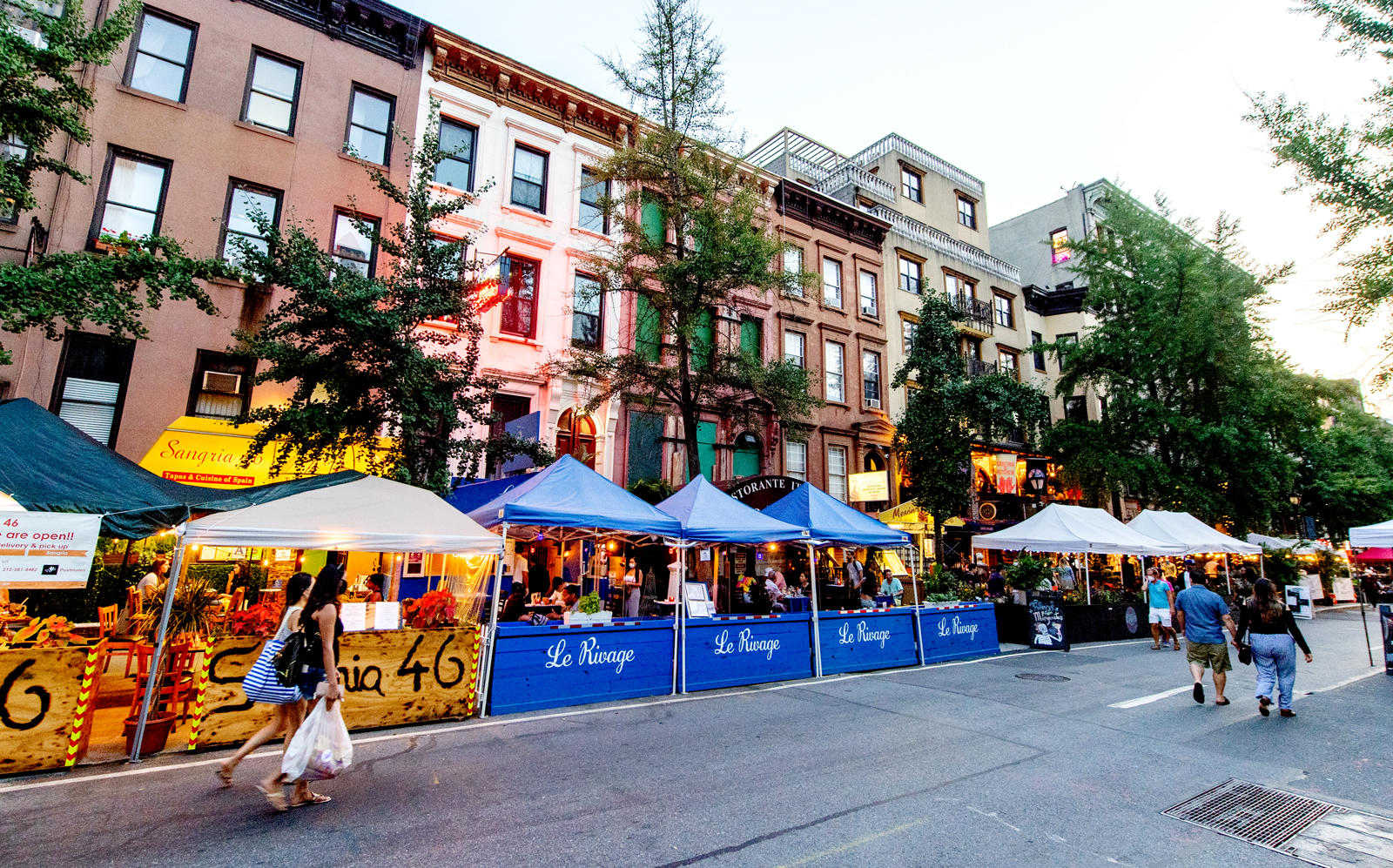 “Slowly marching to our graves”: Restaurants, landlords fear winter will bring chill to open-air dining
“Slowly marching to our graves”: Restaurants, landlords fear winter will bring chill to open-air dining
Trending
Open Streets initiative has drawn a crowd, but restaurants and landlords still struggle
Geospatial analytics firm tracked daily visitors across Manhattan's 56 designated corridors

Since it began in May, the city’s Open Streets initiative has been a draw, helping restaurants and businesses along dozens of corridors that are closed to vehicle traffic on weekends.
But while Mayor Bill de Blasio has called it a “lifeline” for hard-hit restaurants by expanding outdoor dining options and encouraging pedestrian thoroughfares, real estate pros say Open Streets cannot replace indoor dining, which remains banned. Landlords continue to negotiate rent payments with struggling tenants who are barely scraping by, experts say.
Of the 81 Open Streets corridors throughout New York City, West 46th Street between 6th and 7th avenues has drawn the most pedestrians, according to new data from Orbital Insight, a geospatial analytics company. The firm found that on average, there were over 4,600 pedestrian visits a day to that corridor on weekends — on Fridays, from 5 to 11p.m; and on Saturdays and Sundays, noon to 11 p.m.
That corridor — one of the longest by distance — recorded a high of about 8,000 visits on Aug. 14, according to Orbital Insight, and an estimated 386,000 total pedestrian visits from June 1 to Aug. 23.
Orbital Insight found that the average amount of daily foot traffic across Manhattan’s 56 corridors was 2,271. The information was taken from data in Manhattan only, though the firm tracked all five boroughs.
The second most popular corridor in Manhattan was Restaurant Row on West 46th Street, between 8th and 9th avenues, according to the data. That Hell’s Kitchen corridor recorded about 326,000 pedestrians. It averaged around 3,900 visitors a day, with a high of 5,775 on July 31.
The citywide Open Streets program began its first phase in early May, and late last month six new corridors were added. The initiative will return next summer.
Derek Wolman, who leads the hospitality practice group at the law firm Davidoff Hutcher & Citron, said Open Streets can only do so much for the hard-hit restaurants owners and landlords.
“No one is making money that I know of, whether it’s Open Streets or take out,” Wolman said. “Every landlord at this point has pretty much offered a package with some forgiveness of rent, some deferral of rent until next year.”
The future remains uncertain for restaurants, with no word on when indoor dining will return. Restaurant owners are also becoming increasingly wary about the future, concerned business will sink further once the temperature dips and outdoor dining becomes less palatable.
More than 300 city restaurants recently filed a lawsuit against New York City and the state, demanding $2 billion in lost revenue, and arguing there is no scientific evidence for the indoor dining ban.
The Orchard Street corridor — between Grand and Delancey streets — is shorter by distance than the Midtown locations, and saw 828 visits on average. It recorded the highest number on Aug. 1, with 1,924 visits. The Chinatown corridor, on Pell Street — from Bowery to Mott streets — have had 1,000 daily visitors. That area also encompasses a shorter distance than in Midtown.
Meanwhile, in Inwood, the number of number of daily visitors has seesawed. It recorded a high of 5,300 on July 2 and a low of around 1,400 on Aug. 4, according to the data.
Read more
 “Slowly marching to our graves”: Restaurants, landlords fear winter will bring chill to open-air dining
“Slowly marching to our graves”: Restaurants, landlords fear winter will bring chill to open-air dining
 Here’s the check: Restaurants serve NY $2B lawsuit
Here’s the check: Restaurants serve NY $2B lawsuit
 Last-minute reprieve stops city’s tax lien sale
Last-minute reprieve stops city’s tax lien sale




